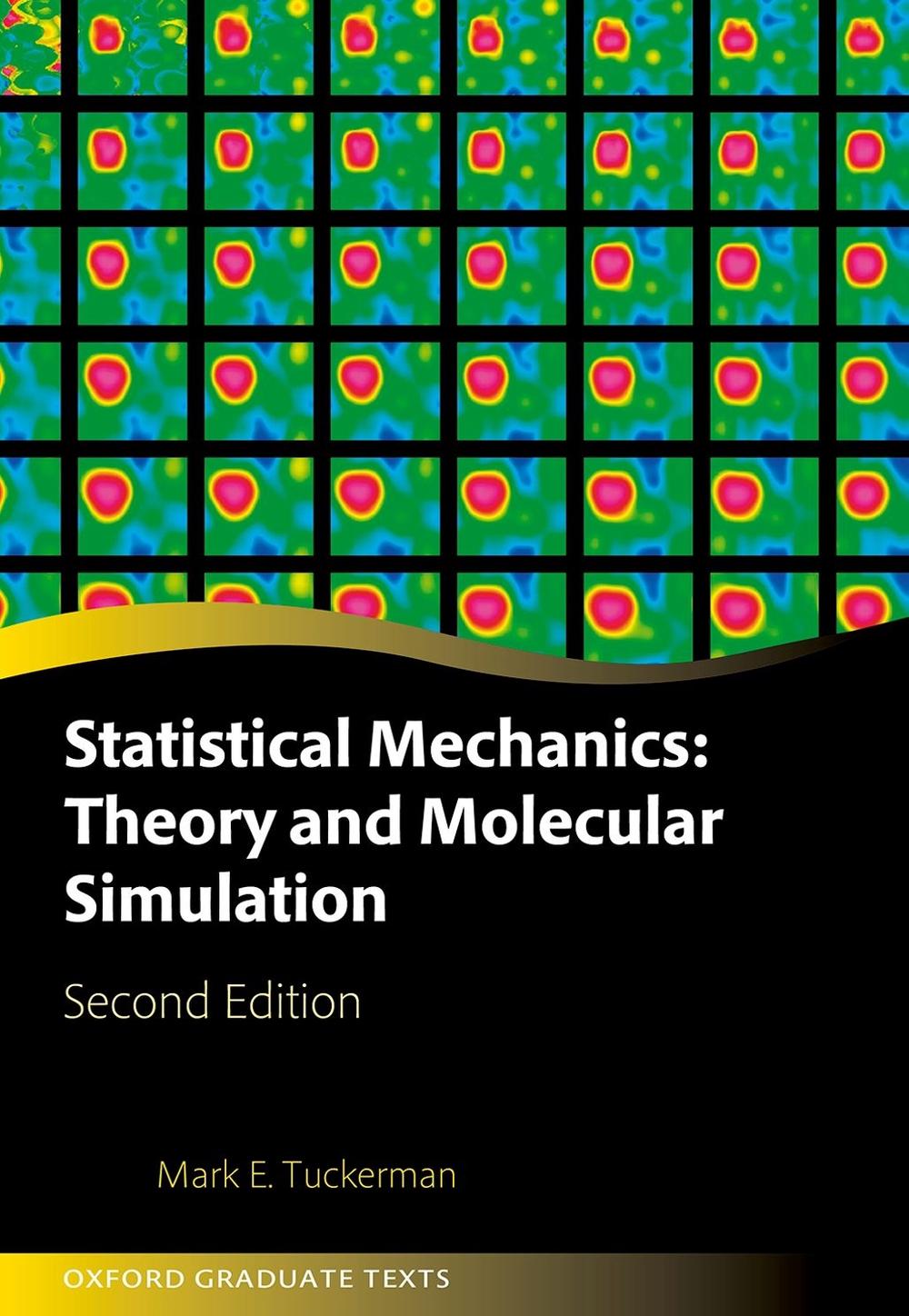
When you click on links to various merchants on this site and make a purchase, this can result in this site earning a commission. Affiliate programs and affiliations include, but are not limited to, the eBay Partner Network.
Statistical Mechanics: Theory and Molecular Simulation: Second Edition by Mark E

- Item No : 236047875833
- Condition : Brand New
- Brand : No brand Info
- Seller : the_nile_uk_store
- Current Bid : US $128.52
-
* Item Description
-
The Nile on eBay

Statistical Mechanics: Theory and Molecular Simulation
by Mark E. Tuckerman
This book synthesizes the underlying theory of statistical mechanics with the computational techniques and algorithms used to solve real-world problems and provide readers with a solid foundation in topics that reflect the modern landscape of statistical mechanics.
FORMAT
HardcoverCONDITION
Brand New
Publisher Description
Scientists are increasingly finding themselves engaged in research problems that cross the traditional disciplinary lines of physics, chemistry, biology, materials science, and engineering. Because of its broad scope, statistical mechanics is an essential tool for students and more experienced researchers planning to become active in such an interdisciplinary research environment. Powerful computational methods that are based in statistical mechanics allow complexsystems to be studied at an unprecedented level of detail. This book synthesizes the underlying theory of statistical mechanics with the computational techniques and algorithmsused to solve real-world problems and provides readers with a solid foundation in topics that reflect the modern landscape of statistical mechanics. Topics covered include detailed reviews of classical and quantum mechanics, in-depth discussions of the equilibrium ensembles and the use of molecular dynamics and Monte Carlo to sample classical and quantum ensemble distributions, Feynman path integrals, classical and quantum linear-response theory, nonequilibrium moleculardynamics, the Langevin and generalized Langevin equations, critical phenomena, techniques for free energy calculations, machine learning models, and the use of these models in statistical mechanicsapplications. The book is structured such that the theoretical underpinnings of each topic are covered side by side with computational methods used for practical implementation of the theoretical concepts.
Author Biography
Mark E. Tuckerman obtained his B.S. in Physics from UC Berkeley in 1986 and his Ph.D. in Physics from Columbia University in 1993. From 1993-1994, he held a postdoctoral position at the IBM Research Laboratory in Zürich, Switzerland, followed by an NSF postdoctoral fellowship in Advanced Scientific Computing at the University of Pennsylvania from 1995-1996. In 1997 he joined the faculty of New York University, where he is currently Professor of Chemistry andMathematics. Honors and awards include the Friedrich Wilhelm Bessel Research Award from the Alexander von Humboldt Foundation and the Camille Dreyfus Teacher-Scholar Award. He became a Fellow of the AAAS in2022.
Table of Contents
1: Classical mechanics2: Theoretical foundations of classical statistical mechanics3: The microcanonical ensemble and introduction to molecular dynamics4: The canonical ensemble5: The isobaric ensembles6: The grand canonical ensemble7: Monte Carlo8: Free-energy calculations9: Quantum mechanics10: Quantum ensembles and the density matrix11: The quantum ideal gases: Fermi-Dirac and Bose-Einstein statistics12: The Feynman path integral13: Classical time-dependent statistical mechanics14: Quantum time-dependent statistical mechanics15: The Langevin and generalized Langevin equations16: Discrete models and critical phenomena17: Introduction to machine learning in statistical mechanicsFree
Review
Review from previous edition A good contribution to scholarship in this area. * Paul Madden, University of Oxford *
Addresses an important area in a nicely coherent and systematic way. * Marshall Stoneham, University College London *
A welcome addition to the literature. * Daan Frenkel, University of Cambridge *Long Description
Scientists are increasingly finding themselves engaged in research problems that cross the traditional disciplinary lines of physics, chemistry, biology, materials science, and engineering. Because of its broad scope, statistical mechanics is an essential tool for students and more experienced researchers planning to become active in such an interdisciplinary research environment. Powerful computational methods that are based in statistical mechanics allow complexsystems to be studied at an unprecedented level of detail. This book synthesizes the underlying theory of statistical mechanics with the computational techniques and algorithms used to solve real-world problems and provides readers with a solid foundation in topics that reflect the modern landscape of statistical mechanics. Topics covered include detailed reviews of classical and quantum mechanics, in-depth discussions of the equilibrium ensembles and the use of molecular dynamics and Monte Carlo to sample classical and quantum ensemble distributions, Feynman path integrals, classical and quantum linear-response theory, nonequilibrium molecular dynamics, the Langevin and generalized Langevin equations, critical phenomena, techniques for free energy calculations, machine learning models, and the use of these modelsin statistical mechanics applications. The book is structured such that the theoretical underpinnings of each topic are covered side by side with computational methods used for practical implementation of the theoretical concepts.
Review Quote
Addresses an important area in a nicely coherent and systematic way.
Details
ISBN0198825560Publisher Oxford University PressSeries Oxford Graduate TextsYear 2023ISBN-10 0198825560ISBN-13 9780198825562Format HardcoverEdition 2ndImprint Oxford University PressSubtitle Second EditionPlace of Publication OxfordCountry of Publication United KingdomEdited by Dickon BevingtonBirth 1938Death 1851Affiliation Medical Director, Anna Freud National Centre for Children and FamiliesPosition Medical DirectorQualifications Ph.D.Pages 880Illustrations 168 line drawings and halftonesNZ Release Date 2023-05-23Edition Description 2nd Revised editionDEWEY 530.13Audience Tertiary & Higher EducationPublication Date 2023-08-01UK Release Date 2023-08-01Author Mark E. TuckermanAU Release Date 2023-07-12


-
- The Lost Super Foods
- $ 37.00
- The Self-Sufficient Backyard
- $ 37.00
- A Navy Seals BUG IN GUIDE
- $ 39.00
- Childrens Books Phonics Lot 60
- $ 34.89
















